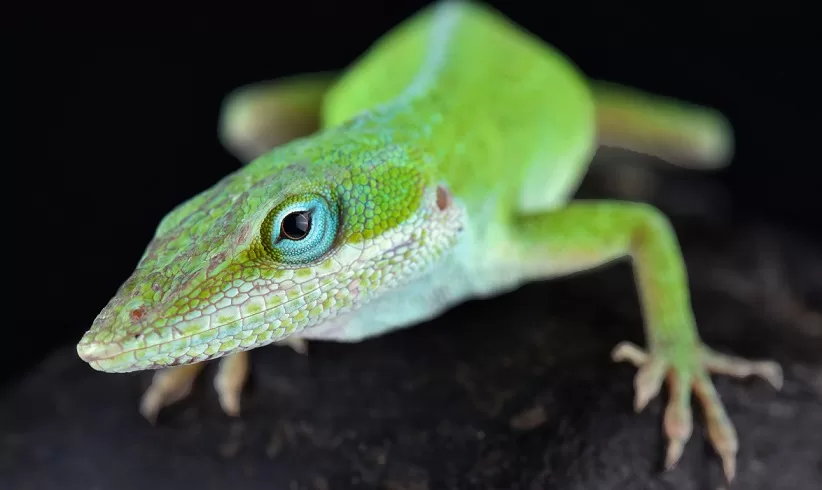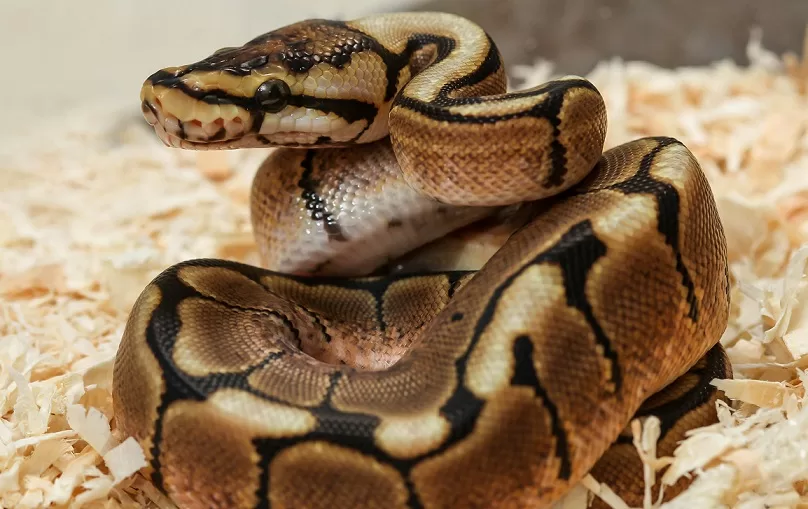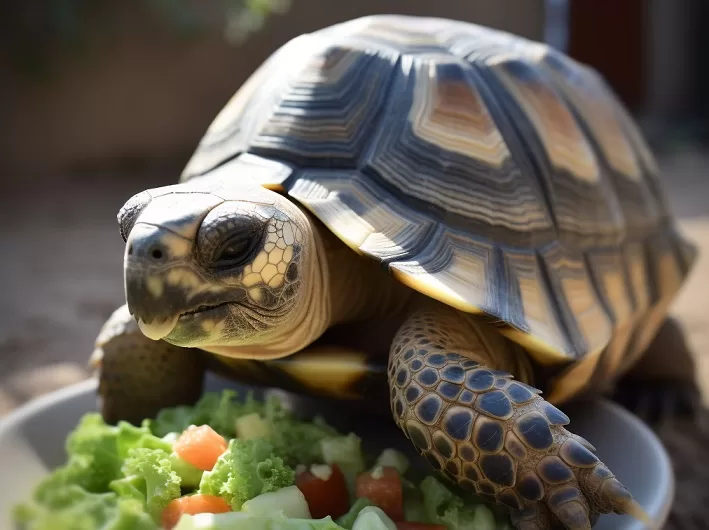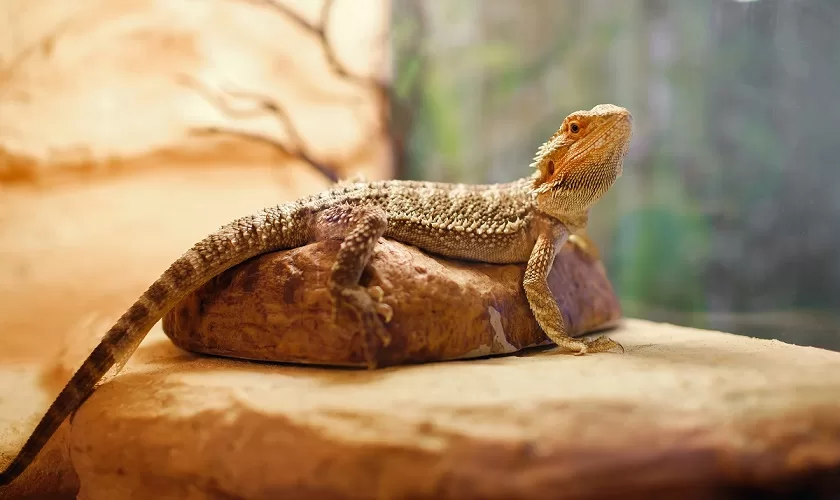Reptiles make for fascinating and unique pets, but not all are suitable for beginners reptile hobbyists. Before diving into the best reptiles for first-time owners, it’s important to understand the broader categories of reptiles that people commonly keep as pets. This article will guide you through the most popular pet reptile species categories, including Lizards & Geckos, Snakes, and Tortoises & Turtles. Once familiar with these best reptile pets categories, you will be better equipped to choose the perfect beginner-friendly reptile.
But first let’s understand…
Which Reptiles Make the Best, Easiest Pets?
When it comes to finding reptiles that make the best, easiest pets for beginners, there are several common factors that should be taken into consideration. Firstly, ease of care is an important factor. Some pet reptiles require very specific diets and environments in order to thrive, while others can be relatively easy to care for with minimal resources. Secondly, size matters– some reptiles can grow quite large and require a much larger space than many other pets. Thirdly, temperament is important; some may be more docile or easier to handle than others. Lastly, availability in terms of cost and access should also be considered when searching for the best reptile pet.
What Makes a Good “Beginner Reptile?”
When looking for a good beginner reptile pet, there are a few key characteristics that you should keep in mind. First of all, look for species that have been domesticated for generations—this will ensure that your new pet is well-accustomed to human interaction and handling. Additionally, choose species that are bred responsibly and from reputable sources—these animals will often be less stressed in their environment and better prepared for life as a pet. Lastly, seek out species with smaller adult sizes and more low-maintenance care requirements—this will help you avoid having to invest too much time or money into their upkeep.
Things you need to be aware of:
- Captive Bred Individuals Are Readily Available
When choosing a reptile pet for a beginner, it is important to look for captive-bred individuals. Captive-bred reptiles are more acclimated to human interaction and tolerating handling better than wild caught. Additionally, they are less likely to be carrying diseases that could be transmitted to their owners. Captive bred individuals are generally readily available through reputable sources, making them a great choice for beginner owners. - No Unusual Food Requirements
One of the key considerations when selecting a reptile pet is its food requirements. Many reptiles require specialized diets or have particularly unusual dietary needs. When selecting a beginner reptile pet, make sure you choose one whose diet is relatively straightforward and live food is easily obtainable. This will ensure that your reptile has access to proper nutrition without much effort on your part. - Nocturnal Species
If you’re looking for a reptile pet who won’t keep you up all night, then you’ll want to avoid nocturnal species—these reptiles tend to spend the majority of their day sleeping while they’re most active at night time. While nocturnal species most reptiles can make interesting pets, they may not be the best choice for those seeking something low maintenance and easy to care for. - Docile Temperament
Another factor in selecting an ideal beginner reptile is temperament—some species tend to be more docile than others and more tolerant of handling. Look for species with tranquil temperaments that do not become easily agitated or aggressive when handled or disturbed by humans. - Reasonably Sized
Finally, size matters when it comes to picking out the perfect beginner reptile; larger species require larger habitats and may present additional challenges in terms of feeding and maintenance costs down the road. Therefore, look for smaller sized species that only grow within reasonable bounds; this will help you avoid having to invest too much time or money into keeping your new pet healthy and happy!
Best Beginner Reptiles
The best reptiles for beginners fall into 3 categories:
Lizards
Lizards and geckos are a diverse group of reptiles, ranging from small, easy-to-care-for species to larger, more demanding ones. They come in a variety of sizes, colors, and temperaments, making them a popular choice for reptile enthusiasts.
Owning a lizard can be an exciting and rewarding experience for beginner owners! Many lizards are relatively low maintenance and easy to handle. Species like the crested gecko and blue-tongued skink require minimal equipment and make great companions for beginner reptile owners.
These lizards can provide hours of entertainment as they interact with their environment, explore tunnels and climb around their enclosures. Having a lizard at home is also educational – it can be fun to observe their natural behaviors and learn more about them as they grow.
Overall, lizards are fascinating creatures and unique animals that can make great pets for those willing to put in the time and effort to properly care for them!
Examples of beginner-friendly lizards and geckos include:
Bearded Dragon (Pogona vitticeps)
The bearded dragon, or Pogonavetticeps, is one of the most popular reptile pets for beginner owners. These lizards are generally docile and easy to handle, and with their bright colors, they can also make a great addition to any home. Bearded dragons are known for being relatively low maintenance; they have simple and readily available diets and can live in relatively small enclosures. Most importantly, these impressive reptiles require minimal intervention—they will happily bask in the sun all day without needing too much interaction or stimulation from you.

Leopard Gecko (Eublepharis macularius)
If you’re looking for a great beginner pet lizard that won’t take over your house, then look no further than the leopard gecko. These easy-to-care-for reptiles are small enough to fit into most homes but full of personality and life. Leopard geckos are particularly known for their vibrant colors and unique markings which make them stand out from other species. In terms of care requirements, these pet lizards will need only a modest enclosure of about 20 gallons and a consistent diet – plus some snacks every now and then!
Crested Gecko (Correlophus ciliatus)
Crested geckos make excellent beginner pets thanks to their active personalities, beautiful colorations and gentle temperaments. Not only do they require very little maintenance—their diet consists mostly of powdered insect or fruit mixes that can be easily ordered online—but they’re also fairly responsive creatures who enjoy interacting with their owners. Plus, crested geckos thrive when they reach an adult size of around six inches so you won’t have to worry about upgrading your pet’s habitat anytime soon!
Blue-Tongue Skink (Genus Tiliqua)
Bearing striking looks, blue tongue skinks also make good beginner reptilian pets thanks to their hardy nature as well as their varied diet that consists mainly of vegetables. They don’t need much space either – about 40 gallons should suffice – and because of this you can easily keep them in your home or apartment without having to upgrade the enclosure size over time. Additionally, with proper care blue tongue skinks can live up to 20 years making them ideal companions!
Green Anole (Anolis carolinensis)
The green anole is well known among passionate herp enthusiasts due primarily to its adaptable nature; it is lightweight yet tough enough to withstand handling by most children or beginners who may not have much experience with handling reptiles before. This small lizard can thrive on a diet made up of primarily crickets as well as other insects while requiring only modest housing such as a ten gallon aquarium filled with live plants like ivy or ferns.
Snakes
Snakes are another popular category of pet reptiles for beginners. They are typically low-maintenance and can be very rewarding pets for those who appreciate their unique characteristics. There are many snake species available, but some are better suited for beginners due to their docile nature and manageable size.
Snakes make great pets for those interested in reptile keeping! There are many species available, ranging from small, easy-to-care-for ones to larger, more demanding varieties.
For those looking for an exciting pet, having a snake can be a rewarding experience. Not only does it provide hours of amusement as you watch the reptile in its natural habitat and learn about its behaviors, but it can also form strong bonds with its owner over time.
While many people think of snakes as solitary animals, certain breeds are actually capable of forming strong emotional attachments with their owners. As they learn to trust and rely on you, these reptiles can become loyal family members who can be counted on to always provide companionship.
Overall, owning a snake can be rewarding and exciting if you’re willing to put in the time and effort to properly care for them!
Examples of beginner-friendly snakes include:
Corn Snake (Pantherophis guttatus)
Corn snakes, also known as Red Rat snakes, are generally a great pet choice for novice reptile owners. They are one of the most common and popular pet snakes, thanks to their docile nature and easy-to-care-for requirements. These reptiles stay relatively small and do not require advanced heating or lighting systems, making them an ideal starter snake. They also come in a variety of colors and patterns that make them truly unique pets.

Ball Python (Python regius)
Ball pythons are among the most popular beginner reptiles due to their relatively small size and docile demeanor. Ball pythons usually stay between 3 and 4 feet, making them manageable for first-time pet owners without taking up too much space in their enclosure. As they tend to be slow movers, these reptiles can be handled with relative ease even by larger hands.
Rosy Boa (Lichanura trivirgata)
Rosy boas are a great choice for novice reptile keepers due to their mild temperaments and adaptability to different environments. These typically nocturnal snakes spend more time hiding than exploring during daylight hours but come nighttime they tend to become active hunters looking for food items such as mice or crickets in their enclosures. Rosy boas grow up to 2 feet in length and require minimal care due to the fact that they prefer cooler temperatures than most other snake species.
California Kingsnake (Lampropeltis californiae)
California Kingsnakes are named after their unique coloring which resembles that of the Californian state flag. Known as one of the ‘Big Four’ kingsnake species along with Florida kingsnakes, speckled kingsnakes, Mexican grey banded kingsnakes – California Kingsnakes is an ideal pet snake for beginners due its nonvenomous bite and its ability to thrive in captivity with appropriate care. Despite achieving lengths of up to 5′ long when full grown California Kingsnake still make well suited beginner pets as they remain fairly docile once accustomed to humans handling them .
Garter Snake (Thamnophis sirtalis)
Garter Snakes have become increasingly popular over recent years due to the range of morphs they now come in including striped varieties such as checkered garters, albino garters or even axanthic garters that possess an almost electric yellow coloration that make them look like something right out of a dream!
Garters take well captivity with basic equipment requirements consisting of an aquarium tank filled with moist substrate (dirt) heat source (such as UVB lighting) and water bowl – all ingredients necessary for garter health maintenance! Their small size makes them easy enough to handle by first time owners but keep in mind that Garters do have some defensive behavior such flicking tongues using musk glands located around the tail – so wear protective gloves when picking up your Garter friend!.
Tortoises & Turtles
Tortoises and turtles are shelled reptiles that can make for captivating pets. They require specific care, including proper lighting, temperature, and diet, to ensure they thrive. Tortoises are primarily land-dwelling, while turtles spend more time in water.
Owning a tortoise or turtle can be a delightful and enriching experience, as they are often gentle creatures with intriguing habits. By following the right care guidelines, even first-time owners can successfully provide a nurturing environment for these amazing reptiles, discovering the joy of having a shelled companion by their side.
Examples of beginner-friendly tortoises and turtles include:
Russian Tortoise (Testudo horsfieldii)
The Russian Tortoise is a great starter pet for reptile newbies – they are small, docile and relatively low-maintenance compared to other pet tortoises. Also known as the Steppe Tortoise, they grow to be around 6-12 inches long and require a slightly more humid environment than other varieties of Testudo species. They have a famously long lifespan – up to 50 years or more making them an awesome companion for those who can commit.
Hermann’s Tortoise (Testudo hermanni)
Hermann’s Tortoises are the most popular species of the Mediterranean tortoises and make a beginner reptile thanks to their being relatively low maintenance. These omnivorous reptiles usually top out at about 8 inches in length and won’t require any special lighting or heating systems as long as you keep them out of drafts, in warmer climates. Hermann’s tortoises are especially hardy, making them perfect for first-time owners who are willing to commit to their care over the course of many years.
Greek Tortoise (Testudo graeca)

The Greek Tortoise is another Mediterranean species that is quite popular among beginners due to its more manageable size (about 8-10 inches) and its bright colors and friendly disposition. They also aren’t as demanding when it comes to high humidity as some of their relatives, which makes caring for these reptiles much easier on new owners who might not be familiar with fancy setups yet. Additionally, Greek Tortoises tend to live longer than many other tortoises so it’s important that you’re prepared for the long haul with one of these pets!
Red-Eared Slider (Trachemys scripta elegans)
Red Eared Sliders have become increasingly popular with novice reptile keepers due to their adaptability, ease of care and availability at pet stores across the country. Typically able reach lengths exceeding 10 inches long Red Eared Sliders will require larger enclosures compared to smaller water turtles such as Painted Turtles but remain suitable pets even for those short on space as they are able used makeshift mini turtle tanks available at most pet stores . Red Eared Sliders come in varied colorations ranging from yellow & green through brown & black combinations making them attractive aquatic pets !
Painted Turtle (Chrysemys picta)
Painted Turtles have become increasingly sought after recently due popularity stemming from peoples desire own smaller aquatic turtles at home without taking up too much time in upkeep or having to buy expensive equipment – all they need is round tank preferably 20 gallon+ filled water , a basking area and platform something hide behind like rock or log floating island positioned so turtle reaches surface snag breath fresh air . With correct setup Painted Turtle can reach size 4-6 inches within single year span perfect length any beginner reptile keeper eager observe watch how changes develop into adulthood.
Essential Supplies for Beginner Reptile Owners: Creating a Comfortable and Safe Environment
- UVB bulb and hood: Ensure your pet receives adequate Vitamin D3, crucial for their health and well-being.
- Heating lamp/mat: Provide a proper heat source to maintain optimal temperatures, catering to your reptile’s specific needs.
- Thermometer: Monitor enclosure temperatures accurately, ensuring a comfortable and safe environment.
- Substrate: Select the appropriate bedding material for your reptile, ranging from soil mixes to newspaper, depending on their species and preferences.
- Water bowl or dish: Supply a suitable water source for hydration or soaking, tailored to your reptile’s requirements.
- Hide/shelter: Offer a secure and cozy spot for your pet to rest and escape from the world.
- Food: Research your reptile’s dietary needs, providing them with the appropriate nourishment to thrive.
Embracing the Joy and Fulfillment of Reptile Ownership
Reptiles can be extraordinary pets, especially for beginners who are eager to learn and experience the unique world of these fascinating creatures. By understanding the broader categories of reptiles and being well-prepared with essential supplies, you can embark on a rewarding journey with your new reptilian companion.
Imagine a young family bringing home their first pet: a curious and friendly Bearded Dragon named Spike. Over time, the family members learn about Spike’s unique behaviors and traits, such as his love for basking under the warmth of the UVB heat lamp, and his enjoyment of a varied diet of insects, fruits, and vegetables. The children watch with delight as Spike explores his enclosure, which they’ve carefully set up with the right substrate, hiding spots, and water dish.
The family diligently maintains the enclosure’s temperature and humidity, ensuring Spike thrives in his comfortable and safe environment. As the children learn more about reptile care and responsibility, they also develop a deep bond with Spike, experiencing first-hand the joy and fulfillment that comes with reptile ownership.
Through proper research, care, and dedication, owning a reptile can be an enriching experience, fostering a special connection between pet and owner. Your new reptilian companion can bring endless fascination and happiness to your life, inspiring a love for these remarkable creatures that may last a lifetime.
By discussing the best reptiles for beginners we hope to inform newbie pet owners about some of the best reptiles they can purchase as pets. If you’re just starting out on your search for the, remember that these animals often require years of dedication and care so make sure you are fully prepared before committing to a new reptilian companion! Good luck on your journey into becoming an experienced reptile keeper!

